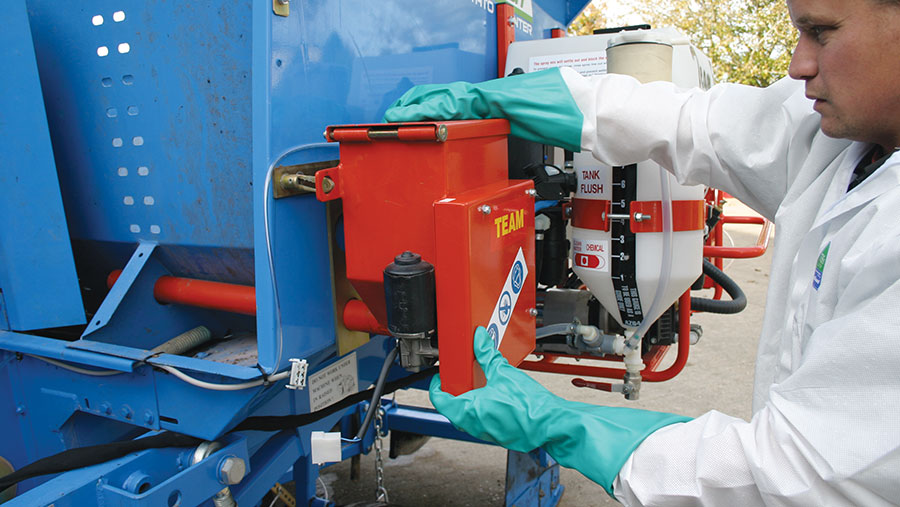Potato growers’ seed treatment options cut further
 © Blackthorn Arable
© Blackthorn Arable Potato growers must prepare to treat their seed with a different application method this season, after the loss of Monceren for rhizoctonia control.
About 30% of powder users applied Monceren (pencycuron) in 2019, which was the only powder treatment still allowed to be hand sprinkled on seed tubers.
However, after Bayer announced that it was pulling the product from the market due to uncertainty over its regulatory future, previous users must change their application methods.
See also: How to maximise spring barley yields after a wet winter
Only two options are now available to growers – either using a liquid treatment or applying a different powder with an on-planter applicator.
Independent potato specialist Andy Alexander says that for him, the preferable option is for growers to switch to a liquid treatment, which can either be applied by the seed supplier or a mobile contractor.
Liquid treatments
Ware crops can be pre-treated with either RhiNo (flutolanil) or Maxim (fludioxonil), although only RhiNo can be used on seed for seed crops.
“It’s also possible to invest in the liquid application equipment for the grading line and do it in-house,” says Mr Alexander, who advises potato growers across East Anglia.
“It is going to be a completely different ball game for some growers.”
For growers wishing to keep the flexibility of treating at planting by sticking with a powder product can either use RhiNo DS (flutolanil) or Emesto Prime DS (penflufen).
Both will need to be applied with an on-plant powder applicator from either Techneat or Team Sprayers.
For Techneat’s Powder Pro system, recalibration is required for any change in product formulation to ensure the correct rate is applied.
The Team Sprayers powder applicator with Digimon control box calibrates automatically within +/- 5% of the set output. It also allows output to be adjusted from 0.6kg/t upwards and can be fitted to all makes of cup or belt planter.
“Some businesses will stick with powder and having to move to an on-planter applicator is a positive step, both from an operator and environmental safety perspective,” says Mr Alexander.

